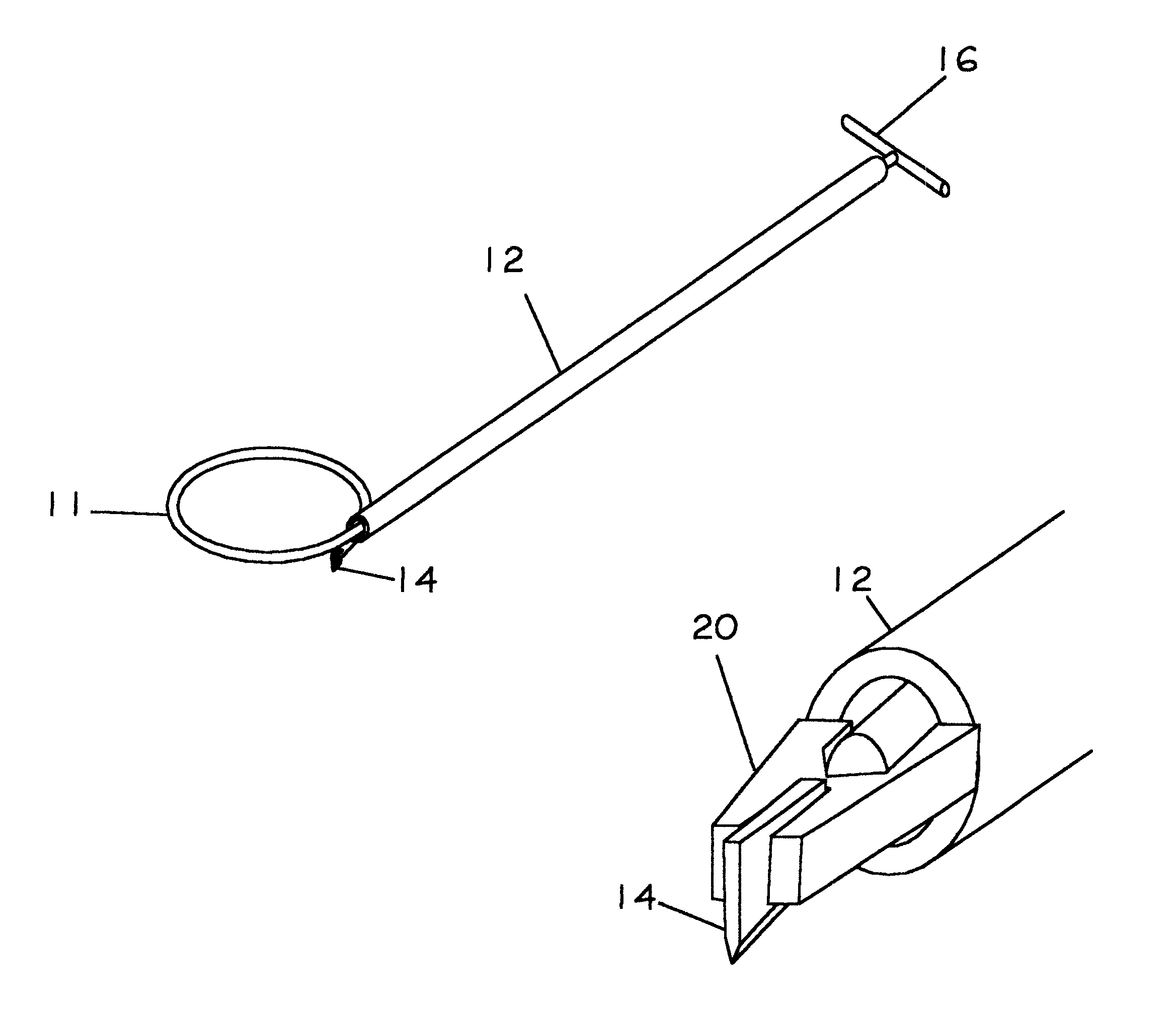Capsulorrhexis device
a technology of capsulorrhexis and stent, which is applied in the field of surgical instruments, can solve the problems of radial tear, weak jagged edges, and unpredictable tears of most skilled surgeons
- Summary
- Abstract
- Description
- Claims
- Application Information
AI Technical Summary
Problems solved by technology
Method used
Image
Examples
Embodiment Construction
A preferred embodiment of the present invention is illustrated in FIGS. 1A thru 1E, 2B, 6 and 7. A super-elastic rod inner member 11 has a circular loop that can repeatably be confined into a straight shape, and when released, returns to its circular loop shape without losing the memory of that circular shape. A slot is cut into the distal tip of the rod 11, and a blade 14 is mounted into the slot. The straight section of the rod 11 is positioned inside of a tubular outer member 12.
When the circular loop section of the rod 11 is retracted inside of the tube 12, the circular loop section straightens to conform to the inside shape of the tube 12. The width of the device in this position is now considerably less than the width of the circular loop, allowing insertion and withdrawal through a small incision.
Once inserted into an eye, the loop section of the rod 11 is expelled from the tube 12, and the loop reforms into its natural, circular loop shape. As the rod 11 is again retracted b...
PUM
 Login to View More
Login to View More Abstract
Description
Claims
Application Information
 Login to View More
Login to View More - R&D
- Intellectual Property
- Life Sciences
- Materials
- Tech Scout
- Unparalleled Data Quality
- Higher Quality Content
- 60% Fewer Hallucinations
Browse by: Latest US Patents, China's latest patents, Technical Efficacy Thesaurus, Application Domain, Technology Topic, Popular Technical Reports.
© 2025 PatSnap. All rights reserved.Legal|Privacy policy|Modern Slavery Act Transparency Statement|Sitemap|About US| Contact US: help@patsnap.com



